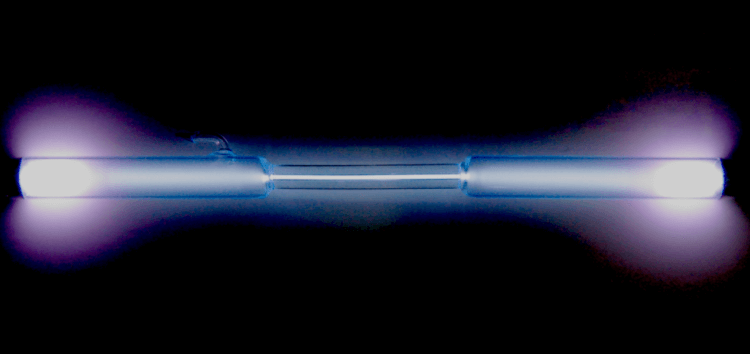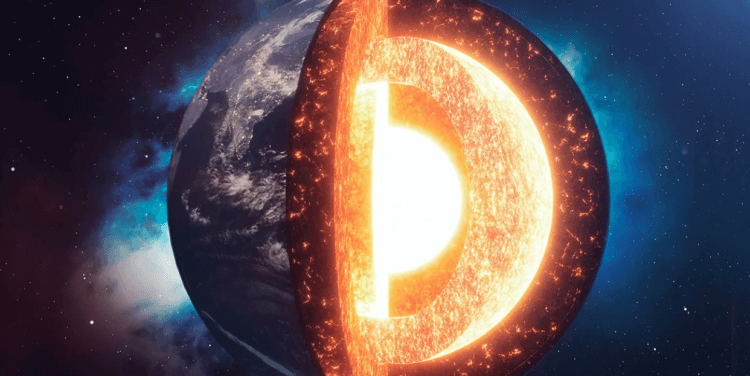Meteorites are known to be of great value for science. Many of them are older than our planet, providing information about the early solar system, as well as about our own planet. As a matter of fact, rocky planets were formed from such small bodies that at some point grouped together. Therefore, they provide information about the chemical composition of planets. Based on a study of carbonaceous chondrites, that is, ancient carbon-rich meteorites, scientists have concluded that our planet's atmosphere lacks large amounts of xenon. But where could he have gone?

There was a large amount of xenon in the Earth’s atmosphere, but it disappeared somewhere
There was a large amount of xenon in the Earth's atmosphere
Carbonaceous chondrites contain information about the proportions of gas in the early Solar System. A study of these meteorites showed that our atmosphere currently contains only 10% of the xenon it should have. The disappearance of xenon is very mysterious, given that it is an inert gas, that is, it does not react with other elements.
Gases such as xenon are also called noble gases. These also include helium, neon, argon, krypton, and some other gases. By the way, radioactive radon, which is released from the soil and currently threatens the Arctic, also belongs to these gases. And a gas like neon is known for being used in the production of chips, as we talked about earlier. These gases were called “noble” because of their certain chemical alienation.

Xenon — a noble gas that does not react with other elements under normal conditions
Surprisingly, other noble gases such as argon and krypton are present in the atmosphere in the same quantities as they should, according to the results meteorite analysis. This means that for some reason only xenon disappeared.
Where did xenon disappear from the Earth’s atmosphere
Scientists have put forward a variety of assumptions regarding the disappearance of xenon. Perhaps it is hidden in minerals, in the core of our planet, or even in glaciers. However, a discovery made in 2018 suggests that other options for its disappearance are possible. As it turned out, xenon is actually not such a “noble” gas as previously thought. At high pressure it can still form compounds with other elements.
During the study, scientists proved the existence of compounds of iron and xenon, which had previously only been guessed at. True, for this there must be the same conditions that exist in the core of our planet. Moreover, it is unlikely that such compounds arose at the stage of the birth of our planet, when the core was just forming, since then there was not such a great pressure as now.

According to one version, xenon may be in the Earth's core
Perhaps a chain of processes occurred, as a result of which xenon was captured in the mantle and then somehow found its way into the core. One team of researchers has even proven that this is possible. Scientists dissolved xenon and argon in the mineral perovskite at pressures and temperatures similar to those found in our planet's mantle.
This suggests that xenon could be trapped in the magnesium silicate perovskite that makes up most of the mantle. However, for now this is only an assumption that remains to be confirmed or refuted.
Could xenon escape from the atmosphere into space?
There is another version, according to which this gas did not remain on Earth, but left the atmosphere as a result of degassing, that is, it was carried into space. This may have occurred during a period when meteorites and asteroids bombarded the Earth and sent the primordial atmosphere into space. However, in this case, the question arises: why haven’t other noble gases, such as argon and krypton, disappeared?

Perhaps most of the xenon flew into space
Perhaps the answer is in the study mentioned above. In their experiment, the scientists discovered that although argon and xenon could dissolve in the perovskite, only very small amounts of xenon were retained. This means that other inert gases could linger on Earth, and xenon flew into space.
Follow the link to our ZEN CHANNEL. We've got plenty of interesting, exciting science content for you.
According to this theory, the relative abundance of xenon, krypton, and argon in the Earth's atmosphere depends on how well these elements dissolve in the perovskite. However, if this theory is correct, then perovskite should also be in the mantle of Mars, since there is a certain amount of xenon in the atmosphere of this planet. If it turns out that there is not enough perovskite in the Red Planet's mantle, scientists will still have to look for the missing xenon on Earth.